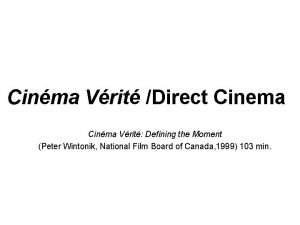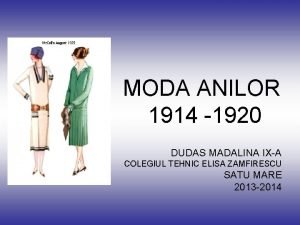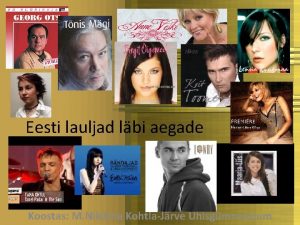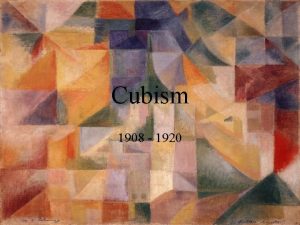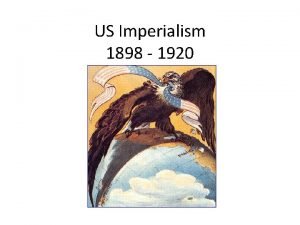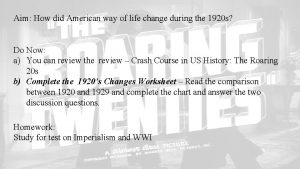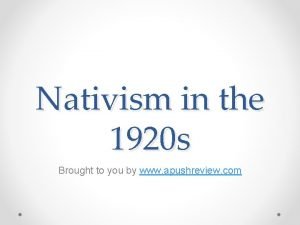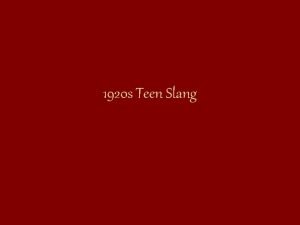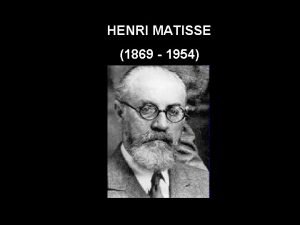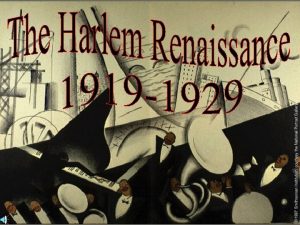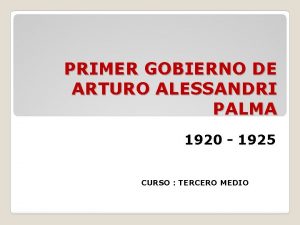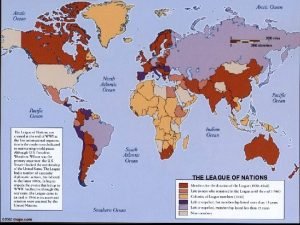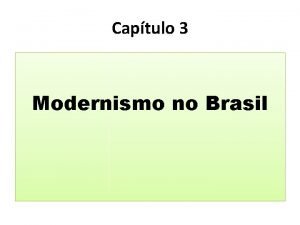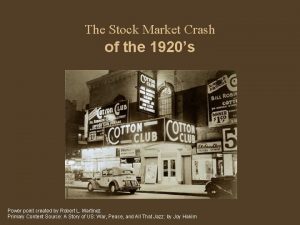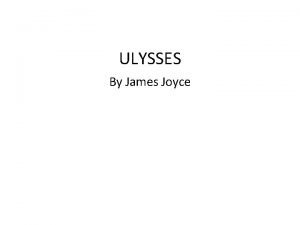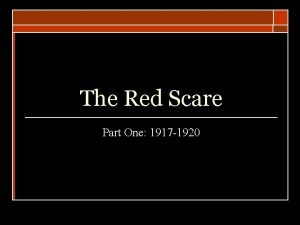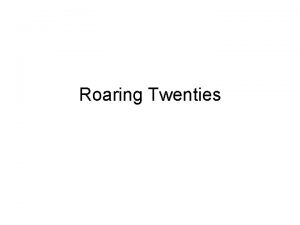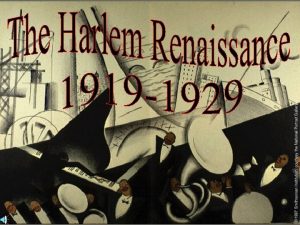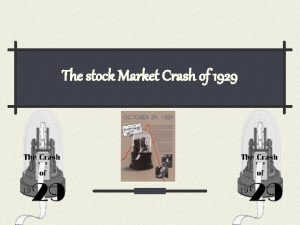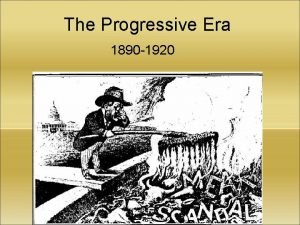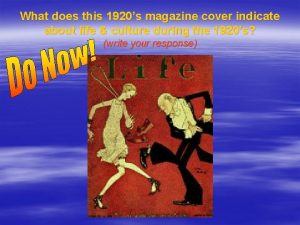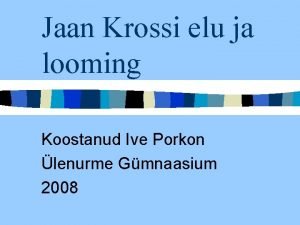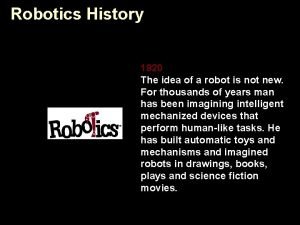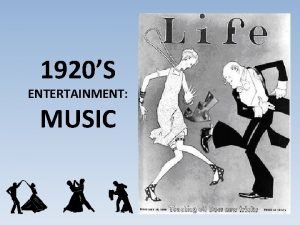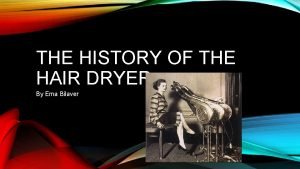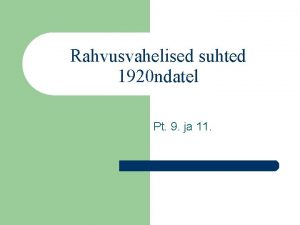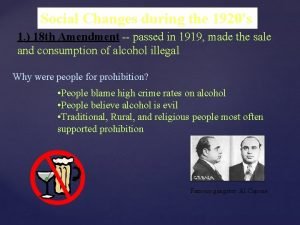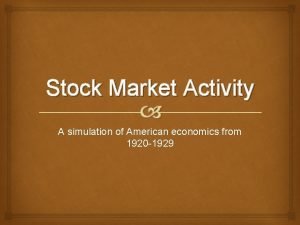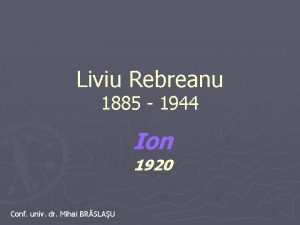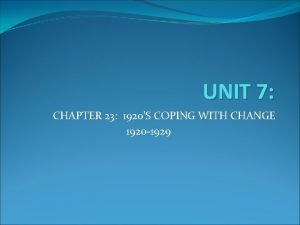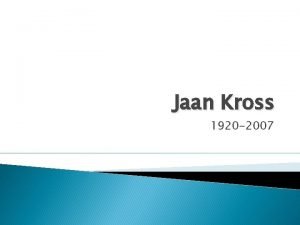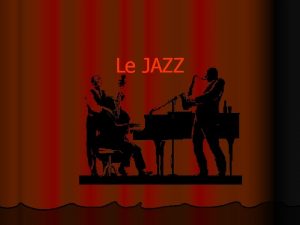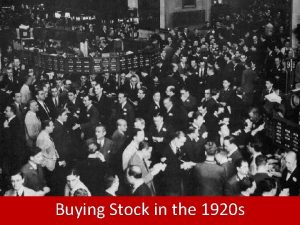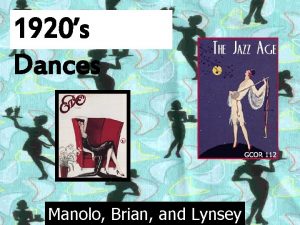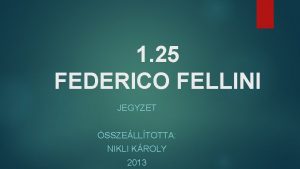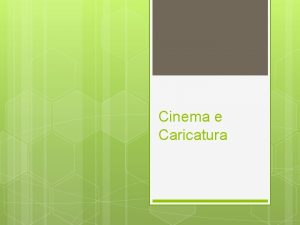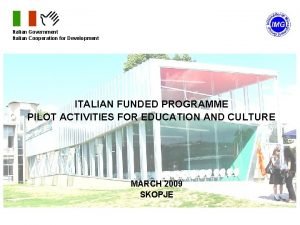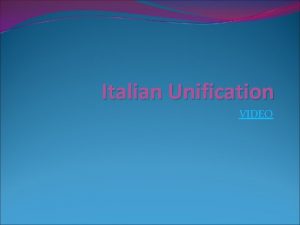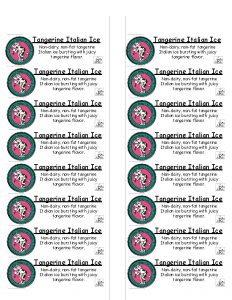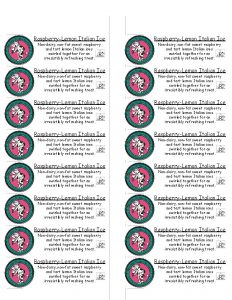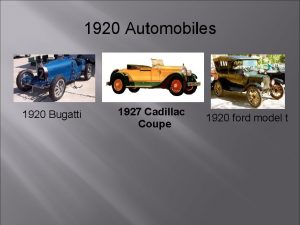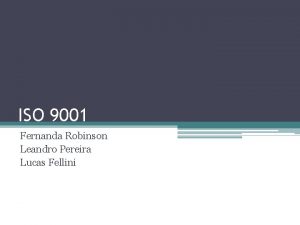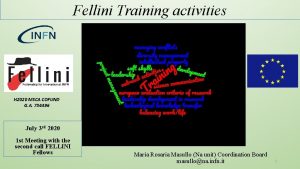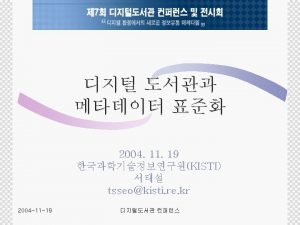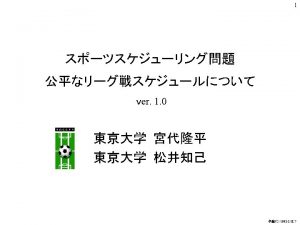Federico Fellini 1920 1993 I am cinema Italian













































- Slides: 45

Federico Fellini (1920 -1993) ‘I am cinema. ’

Italian Cinema • Italy as one of the greatest cinematic nations • In history, production started in 1903 • In the number of the films made: 6 th in the world (1 India, 2 USA, 3 Japan, 4 China, 5 France, 6 Italy, 7 Spain, 8 UK, 9 Germany) • In the variety of auteurs • In the number of stars • In national esteem

History • Quo Vadis (1912) – the first blockbuster film in history of cinema with 5, 000 extras, lavish 3 dimensional sets, 2 years production time, running time 2 hours. • Epic about the time of the emperor Nero and the prosecution of Christians. • clip

History • Cabiria (1914) – epic and blockbuster film set at the time of the 2 nd Punic War, including scenes such as the eruption of Mt. Etna, the Alpine crossing of Hannibal, the sea battles at Syracuse, Scipio’s advance in N. Africa

Federico Fellini Michelangelo Antonioni

Roerto Rossellini Vittorio De Sica

Ettore Scola Sergio Leone

Dario Argento Pier Paolo Pasollini

Bernardo Bertolucci Franco Zeffirelli

Mario Bava Mario Monicelli

Ermanno Olmi Lina Wertmuller

Francesco Rosi Luchino Visconti

Paolo and Vittorio Taviani Nanni Moretti

Roma Citta Aperta (1945) by Roberto Rossellini Lives of Romans fighting against the Nazi occupation Pina shot by an invisible bullet

Bicycle Thieves (1948) by Vittorio De Sica – about a poor father searching for his stolen bike without which he would lose his job. Thief

Salvatore Giuliano (1962) by Francesco Rosi – a biographical film about a enigmatic Sicilian bandit, Salvatore Giuliano

Il Gattopardo (1963) by Luchino Visconti – about a Sicilian aristocrat, whose fortune is about to decline with the arrival of modernity. Italian Trailer

Il Vangelo secondo Matteo (Gospel According to St. Matthew: 1964) – retels the story of Jesus Christ from Nativity to Resurrection Baptism

The Battles of Algiers (1966) by Gillo Pontecorvo – about fighting for independence in Algieria Female bomber

Il Conformista (The Conformist: 1970) by Bernardo Bertolucci – about a man helping fascists to assassinate his former professor. Dance scene

Tree of Wooden Clogs (1978) by Ermano Olmi about Lombard peasant families in cascina (farmhouse) in the 19 th century eviction

Kaos (1984) by Paolo and Vittorio Taviani – a omnibus film of four episodes and an epilogue based on Pirandello’s stories exile

Federico Fellini • One of the most celebrated and distinctive filmmakers not only in Italy but in the world. • Without much formal training in filmmaking, he started making films with distinctive visual styles

• Dreamlike or hullucinatory imagery imposed on ordinary everyday situation • Personal expression

• People at their most bizarre • Artistic fantasy

Life • Born in the seaside town of Rimini, moved to Rome at 19. Enrolled in a law school but quickly abandoned it. Neither attended a film school nor frequented cinema and cine club. Supported himself by contributing cartoons and gags to Marc’ Aurelio

• Fellini worked as a scriptwriter for a radio programme starring Giulietta Masina, who became his wife in 1943 and starred in his post-war films. They were married for 50 years.

• Rossellini engaged Fellini as one of a team of writers for Roma, Citta Apertá (1945): the seminal film of Neorealismo. First Oscar nomination • One of the most successful scriptwriter during the neorealist period • Rosselini’s Paisá, Germi’s Il Camino della speranza, Lattuada’s Senza pieta, Comentini’s Persiane Chiuse

His Work • Fellini’s directorial debut was Luce dei varieta (Variety Lights: 1951) , a collaboration with Lattuada • Lo Scheicco bianco (White Sheik: 1951) and I Vitelloni (1953) first masterpiece and commercially successful

• Semi-autobiographical and sarcastic observation of four ‘mama’s boys’ living in a provincial town. • All four want to quit the seaside town where they were born and living and their lives there. Only Morald managed to leave it for Rome.

Fellini’s Major Works • A trilogy dealing with the fate of the innocent in a cruel world without salvation. • La Strada (1954) – Anthony Quinn as a cruel circus strongman and Masina as a pathetic waif who loves him. The film was shot on location and the desolate landscape symbolizes the inhumanity in the relationship.

“forcing of the photographic image in a direction that carries it from an image of caricature toward that of the visionary. ” Italo Calvino • Fellini’s indebtedness to the Italian mass culture in creating cinematic images. • Caricature and circus

• Stars Masina as a simple and optimistic Roman prostitute, who because of her blind trust in everybody and gullibility is deceived by many men and customers • Holy innocent in a cruel and merciless world

• La Dolce Vita (1960) • The 60 s sexual liberation started with the release of Dolce Vita (sweet life) • The first collaboration with Marcello Mastroianni (Fellini’s alter ego) • Handsome, promiscuous, carefree journalist enjoys a decadent life in Rome.

• La Dolce Vita as an icon of the 1960 s • Erotic images and sexual suggestiveness which had not existed in cinema anywhere • Stand for the 1960 s permissiveness and sexual liberation


• Nadia stripping herself to celebrate her divorce

• Cause célèbré • Scandalized the conservative and the old and upset the church • The film was criticized by the Vatican newspaper and banned in Spain • Imitated, influenced and parodied a number of times

• La Dolce Vita as a social phenomenon • A indictment of the popular media (the word paparazzi was made into the English vocaburary) • Decadent intellectuals and aristocrats which hang around Via Veneto

• • Surreal, dreamlike and hallucinatory images Fellinesque Total lack of conventional narratives and plots Episodic storytelling: avant-garde art cinema


• 8 ½ (Eight and a half: 1963) – arguably the greatest film that Fellini created • The best European film ever made (1987 panel of scholars • The fourth greatest film (Sight and Sound 2012)

• About a plight of a famous film director (based on Fellini and played by Mastroianni) in his creative crisis • High modernist aesthetics, perfect combination of realism and symbolism

Fellini as a Byname for European Art Film • After the phenomenal successes of La Dolce Vita and 8 ½, it became an event that Fellini made a new film. • Break with conventional filmmaking techniques, his films were made of freely structured tales in which reality and dream mingle.

• Amarcordo (1973) – nostalgic reminiscences of Fellini’s adolescence in Rimini during the fascist period. • Satire on Italy’s lapse of conscience: fascism and the Catholic Church ‘imprisoned Italians in a perpetual adolescence. ’ (Fellini)
 La vrit
La vrit Moda anilor 20
Moda anilor 20 Farmakokinetikk
Farmakokinetikk Toplumcu gerçekçi şairleri
Toplumcu gerçekçi şairleri Laulja 1945-2020
Laulja 1945-2020 Cubism (1908-1920)
Cubism (1908-1920) 4096/1920
4096/1920 1898 to 1920
1898 to 1920 American way of life 1920
American way of life 1920 Nativism in 1920
Nativism in 1920 Popolazione mondiale 1920
Popolazione mondiale 1920 Bearcat slang
Bearcat slang Matisse 1920
Matisse 1920 Map of harlem during the renaissance
Map of harlem during the renaissance Arturo alessandri palma primer gobierno
Arturo alessandri palma primer gobierno 1024/1920
1024/1920 Comrade lenin sweeps the globe clean
Comrade lenin sweeps the globe clean Os modernistas dos anos 1920 frequentemente
Os modernistas dos anos 1920 frequentemente Stock market crash
Stock market crash Frame border
Frame border Ulysses 1920
Ulysses 1920 The red scare of 1919-1920 was provoked by
The red scare of 1919-1920 was provoked by Demobilization roaring 20s
Demobilization roaring 20s Harlem map 1920s
Harlem map 1920s Buying stocks
Buying stocks 1920 urbanization
1920 urbanization 1920s magazine cover
1920s magazine cover Maailmamajandus 1920. aastail
Maailmamajandus 1920. aastail Jaan kross elu ja loomingu ülevaade
Jaan kross elu ja loomingu ülevaade Haribo 1920
Haribo 1920 Robot 1920
Robot 1920 Jazz babies 1920
Jazz babies 1920 History of the hair dryer
History of the hair dryer Rahvusvahelised suhted 1920. aastail
Rahvusvahelised suhted 1920. aastail 1920s social changes
1920s social changes 1920
1920 Tel tone stock 1929
Tel tone stock 1929 Ion 1920
Ion 1920 Chapter 23 activity: coping with change, 1920-1929
Chapter 23 activity: coping with change, 1920-1929 Kirjanik jaan 1920
Kirjanik jaan 1920 Surrealismo 1920
Surrealismo 1920 Musique jazz 1920
Musique jazz 1920 1920 nicknames
1920 nicknames Tel tone stock 1929
Tel tone stock 1929 Max weber (1864-1920)
Max weber (1864-1920) Manolo dance
Manolo dance
